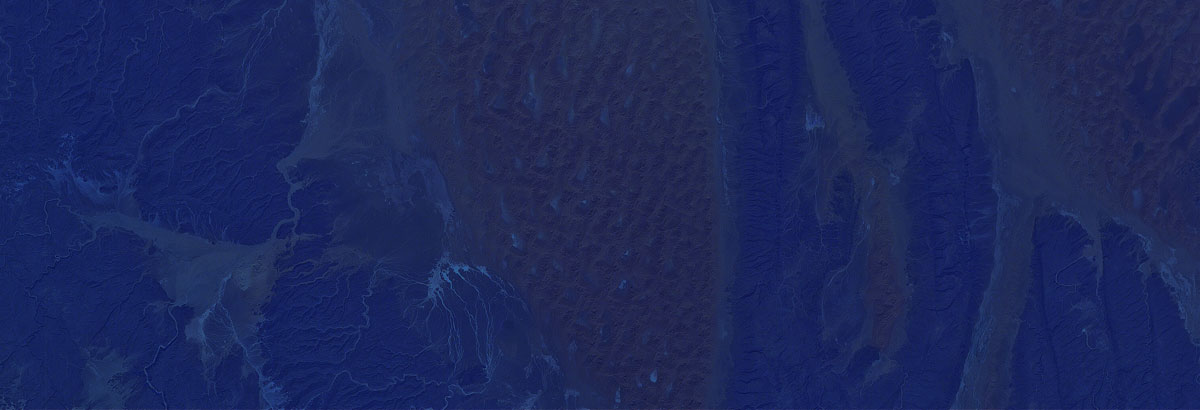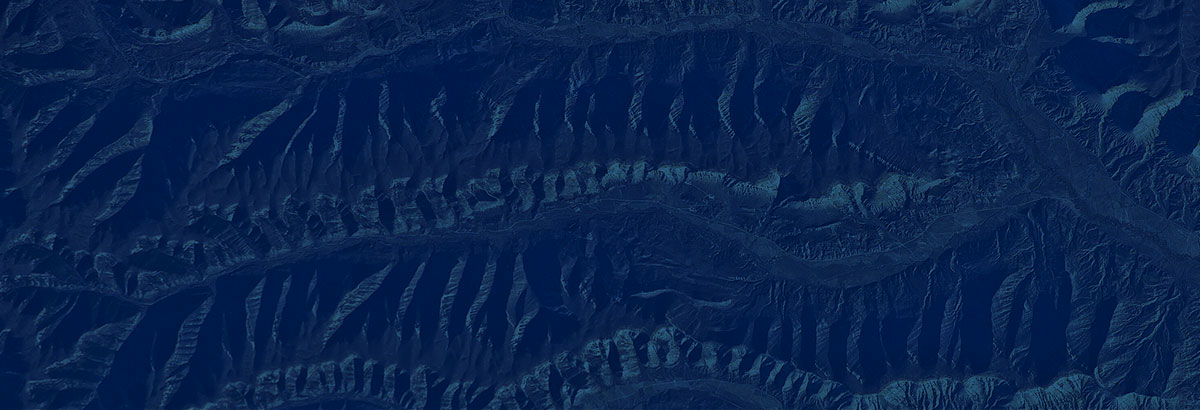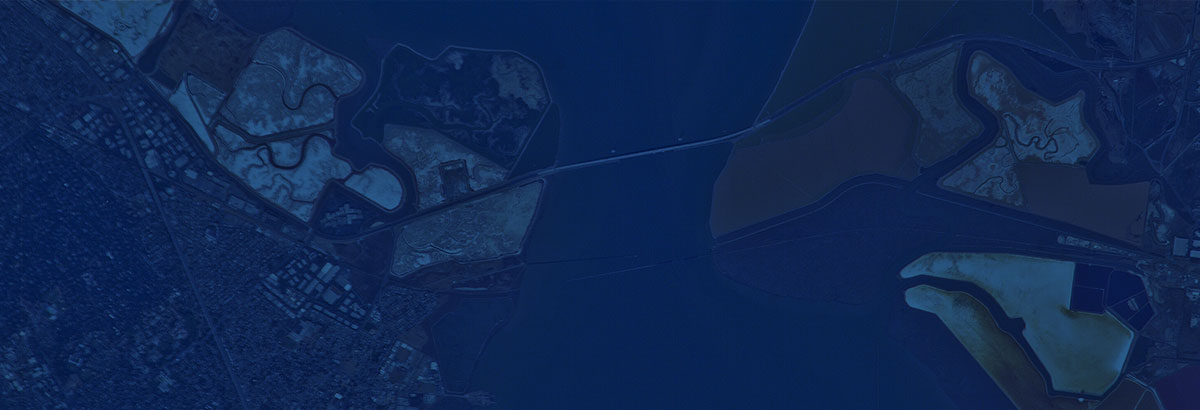Marc Buie: An Astronomer’s Experience at the Great American Solar Eclipse
September 29, 2017
INTERVIEW WITH MARC BUIE: THE GREAT AMERICAN SOLAR ECLIPSE
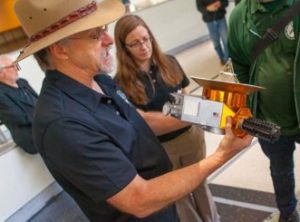
We recently had a chance to catch up with Marc Buie, astronomer, planetary scientist, and institute scientist at the Asteroid Institute. Buie works with telescopes from around the globe, has a long-term interest in Pluto (having created some of the best maps of Pluto’s surface prior to the New Horizons encounter), and has published over 115 peer-reviewed research papers. He has studied smaller bodies in the solar system, including asteroids and comets, and “Asteroid 7553 Buie” was named in honor of Marc’s study of our solar system.
Despite all these accomplishments and a long career in the field, Marc didn’t get to view a total solar eclipse until this year on August 21st. We asked him a few questions about his experience at the eclipse that crossed the U.S., and his answers touch on studying occultations, why you shouldn’t make decisions about how to see an eclipse before you have to, and why one eclipse may not be enough for many of us.
Below are excerpts from our interview with Marc Buie in September 2017:
B612: Hi Marc, thanks for taking the time to answer some questions about your experience at the eclipse on August 21st. You, like many people in our country and internationally, traveled to a part of the county where you witnessed the Great American eclipse in the path of totality. Where did you go, who did you watch it with, and why was it important for you to be there to see the eclipse?
Marc Buie: I didn’t decide where I was going until basically the evening before because I wasn’t about to go someplace where it was going to be cloudy. For months, even years, people were saying, “What are you doing for the eclipse?” And my answer was always, “I’m gonna go see it.”
Everybody else is thinking, “I gotta have a hotel in this spot” or “I have to have a camping spot here.” I know from experience because I do this. This is just another kind of occultation. Do you know what an occultation is?
B612: No, please tell us.
Marc Buie: It’s when something gets in front of something else. In the case of the solar eclipse, it was the moon occulting the sun. This is actually something that I do for part of my science research. I do things like I measure the size of an asteroid or planets, and I study atmospheres by watching when they pass in front of a star. I watch the starlight from a telescope and the intervening object gets in the way, and I can measure properties of the thing that blocked the light. I can measure how big it is. I can measure things about the composition and structure of an atmosphere. It’s a very, very powerful technique. I spent a couple of months in Argentina this summer – our summer – doing just that with the next object that New Horizons is going to. New Horizons went to Pluto, and it’s now going on to another object in the Kuiper belt. So, I do this all the time. I travel halfway around the world to go and see an occultation, and many of the things that are rules of thumb or rules of the road in how you go about viewing occultations also apply to watching a solar eclipse. In fact, some of my observers that I call upon actually do chase eclipses professionally – solar eclipses – around the world.
One of my biggest rules is don’t ever make a decision before you have to. You never know what’s going to happen. It could be traffic; it could be weather; it could be any number of things. I just don’t want to get locked into something where I’m not gonna see it because I have been waiting my entire life to see a total solar eclipse.
B612: We heard that this was your first viewing of a total solar eclipse.
Marc: Yeah, I’ve seen lots of partials. I’ve seen quite a few total lunar eclipses, but I’ve never been in the right place at the right time to see a solar eclipse. In fact, for any that were reasonably close during my life, I didn’t have enough mobility. For example, I’m ten years old and my parents don’t want to go see one, or I was stuck because it’s final exams at college. In the case of the one in 1991, I was just a week away from moving the family from Baltimore to Flagstaff, Arizona, and I just couldn’t get away. That’s kind of been the story – that it has just never worked out.
I had my eye on this occultation for 10, 20 years. I knew it was coming.
B612: You’ve been planning for it.
Marc: No, just staying informed. And, in fact, everybody asked “What’s your plan?”
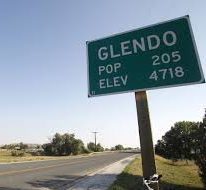 and I said, “I don’t have any plans; I have options.” My only plan was to see it. Everything else is options.
and I said, “I don’t have any plans; I have options.” My only plan was to see it. Everything else is options.
As it turns out, we ended up in Glendo, Wyoming. It’s a tiny little town just off of I25. As we drove into town, the sign said the population was 205.
B612: How many do you think were there on August 21st?
Marc: Oh my goodness! The people were just scattered everywhere. I would not be surprised if there were hundreds of thousands of people in the area. There is a huge reservoir there with a great big state park. There’s a lot of camping there, so I’m sure there were just people all around the outside of that lake and all around town.
I was in the schoolyard. There’s one school in Glendo, and on the grassy fields just north of the school building is where I was by invitation from a group put together by Sky & Telescope Magazine. They lead these eclipse tours chasing around the world, and this particular group was 200 people who paid for Sky & Telescope to take care of them and get them someplace. Four buses of people come trooping in that morning and had spent the night in Cheyenne. They arrived about nine in the morning and we’d already been there a couple of hours. We had this nice big field to ourselves and were wondering why nobody else was hanging out there, and all of a sudden hoards descended upon the field with tripods and cameras and binoculars and chairs and everything. They just flooded the field, so we were embedded in the mix of a huge number of people that were just completely and totally into watching a solar eclipse. For probably most of them, this was not their first. It was a very, very tech-savvy crowd.
I was kind of amazed because I was invited by one of the senior editors of Sky & Telescope. We were talking the week before about this other project, this occultation project I was working on in Argentina, and he says, “Oh, hey, you should come by. We’d love to have you.” And I figure they know I’m an astronomer, and they just want to get people there. So I said, “OK, I’ll go.”
I brought a sack full of New Horizons swag – pins and stickers and bumper stickers, you name it. I was prepared to be entertaining the crowd there, and I brought all this stuff. They could care less. They had one thing on their minds and that was seeing the occultation – seeing the solar eclipse.
I was walking around looking for opportunities to engage people and talk to them. I even had my pullover which has New Horizon’s stickers on it, so it kind of looks like a uniform, and nobody was interested.
I felt like I was intruding upon their experience, so I just sat down on the chair and watched it myself.
B612: Did you bring your equipment with you? Were you measuring anything or doing anything scientific, or did you just enjoy it?
Marc: Well, I was trying as hard as I could to just enjoy it. But, I’m just too much of a data geek to go completely cold turkey. (laughs) So, I had three things with me.
I had my binoculars, which are amazing binoculars. They are image stabilized, and the amount of detail you can see with these things are just phenomenal. If you have never experienced looking through stabilized binoculars, you gotta try it out. It’s just unbelievable. It doesn’t matter whether you’re looking at birds or the mountains or astronomical objects, the detail you get out of relatively small binoculars will just take your breath away.
They are a little pricey, but of all the optical gizmos I’ve ever bought in my life, this is worth every single penny that we paid for it. I’ve seen things down in Arizona in my observatory. There are some cool birds that fly overhead. I’m sitting on my deck one day, and I grab the binoculars and look. Wow, there’s a Bald Eagle flying around up there, and it’s got something in its beak! And I never would’ve known what it was if I didn’t have those binoculars.
Another time I was out there in Arizona and the space station flew overhead. I can count the solar panels on this darn thing! I could see the shape of the space station from these binoculars. And, to see the Solar Corona during the total eclipse through these binoculars, that was just (pause) spectacular!
So the second thing I had was my SLR camera, and I was trying not to get too involved in taking pictures because I’ve heard from a lot of people who say, especially for your first time, to just watch it. Don’t try to do too much; just watch. I had set it up to do time lapse photography just looking across the landscape. I was hoping that I’d get to see the shadow coming by for the totality. But we were, I don’t know, maybe 10 or 15 minutes away from totality, and I knew that this sequence of images was just going to be completely boring. So, at the last second I reconfigured with the telephoto lens to get it ready, focused with a cable-release on the tripod so when it hit totality, if I had time, I could quickly point the camera at the sun and take some pictures. Which I ended up doing and I got, you know, a handful of pictures. But I really didn’t try that hard. So, they’re not good for being on the cover of the New York Times or anything like that, but you know, it’s something.
The third piece of gear that I brought with me, and I bet you I was the only one in the state of Wyoming with such a gizmo in my possession, was a thing called a Sky Quality Meter. It’s a little box and it has a photocell in it, and you press a button and point it at the sky and it will tell you how bright the sky is. It’s not much use during the day because that’s too bright, and they don’t bother to tell you how bright the sky is during the day. What it’s used for is to measure light pollution at night. So you could be in the middle of New York City, or downtown Boulder, or out in the middle of nowhere and point this overhead, and you can make a measurement that will tell you instantly how dark the sky is. If I got that number I could tell you if you got this telescope you could look up and you could see this kind of thing in the sky or not, depending on how bright the sky is. And I always imagined that the sky was quite dark during a solar eclipse because, heck, the sun’s gone, right?
B612: Right.
Marc: You see the stars popping out, and I thought, “Wow, that’d be kind of cool to measure the brightness of the sky during the eclipse.”
But, I never pulled it out. Never even bothered to look. I completely forgot about it. It was in my jacket pocket. The reason, I think, that I didn’t think about it was that it didn’t get that dark. I was a little surprised about that. I thought the stars would come out and you’d see constellations, and it’d be like a couple of minutes of nighttime in the middle of the day. And, it wasn’t like that at all. It was a little bit more like deep twilight maybe. So, you could see Venus easily enough. You could even see it before you were in totality. And then through binoculars, I could see Regulus near the sun and the moon. Other than that, it was just sort of a deeply darkened sky, but it wasn’t like stars were poking out. There would have been no point in making a measurement with this thing, so I didn’t really miss anything.
B612: I wanted to ask you why eclipses are important to science and scientists?
Marc: In this particular case, the solar eclipse, this is an astronomical spectacle for me. I don’t do research on the sun. Other people do. But it’s a niche field. And in fact, I could not tell you what it is important about continuing to observe solar occultations. I know that people still do it, I know they get funding, and I’m not saying that what they do is not worthwhile, but it’s just not my thing.
But, it’s an astronomical spectacle that is just fun to watch for its own aesthetic value, and that’s what I brought to the table. It was just that I want to see one of these things.
It’s been a part of the human history and culture for millennia and I wanted my turn.
In fact, as this was happening, I was just sitting there thinking about all sorts of things as I was watching it get dark. During totality I’m thinking, “Wow, can you imagine what it would’ve been like 6,000 years ago?” You’re just out there hunting and gathering as you would on a normal day, and it’s starting to get cool and the light is getting weird, and all of a sudden the sun goes away. You see this spectacle in the sky. What would you think?
B612: If you didn’t know what was happening, it would be scary, I assume.
Marc: Yeah, now the odds of any given person seeing it or noticing it was not particularly low. So then immediately I’m thinking, OK, suppose you saw one of these things, how would you figure out what it was you saw?
And so we, as a species, have managed to do this, and it was an endeavor that transcended lifetimes. Something that was completely an impenetrable mystery ages ago changes to something that is now just another part of our modern day life. Albeit a really cool one. But, we don’t wonder and worry about the cause of this at all. Everybody just knows. And that in itself is kind of an interesting transformation – going from ignorance to knowledge. That kind of resonates pretty well with the B612 mission, right?
To go from ignorance to knowledge about the dangers that face us in the future from near-Earth asteroids. Knowing a thing is so much better than just fearing it.
B612: I had wanted to ask you about how the eclipse connects to the work we’re doing, and that’s a great example. Do you think there are other ways that the eclipse might connect to the work you’re doing at B612?
Marc: Well, it’s a doorway. It allows some interesting conversations with people. For a few days, they are thinking about things astronomical. If you get an opportunity, you take advantage of it. You say, “Hey, I work on this other project.” And people are more willing to listen and talk about astronomical things for a little while, but then, you know, everybody settles back into their regular grind and they forget. It’s still cool to get everybody latched on to something, whatever it is, that’s astronomical. Something that’s getting them thinking beyond their immediate environment. It’s not easy to ignore the outside world when there’s something like that going on outside your door.
I don’t know about you, but I’ve been doing this stuff for a long time. I have seen so many pictures of solar eclipses. The number one emotion, feeling, response, and reaction that came to me the first instant of seeing totality was one of astonishment. I think I am still trying to process what that really means, but it was not what I was expecting.
B612: Yes, it really was emotional and more intense that you would’ve thought it would be. For many people, it had a really deep effect on them.
Marc: Exactly. And the pictures, I don’t think based on my own experience that I can say I’ve ever seen a photograph of an eclipse that does it justice in comparison to a real live, personally witnessed event. We all know this, that the world is far more beautiful than can be captured by photographs. And even the best artists struggle to capture what’s in the scene and put it in front of you. Usually, they can only capture a piece of it.
I know that one of my favorite photographers is Ansel Adams, and the landscape photography that he does is just transcendent. But a lot of it is black and white. And it changes the view, it does something with the landscape, and you appreciate it in your own way. But it is only one dimension (or two dimensions if you want to be generous) of this landscape. Being on this planet with all this cool stuff around us in landscapes, it’s always better to just be there. It’s not different with the eclipse.
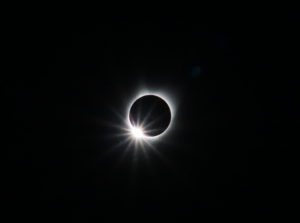
Photo by Michael Berry
That structure in the sky, the Corona thing off to the sky and then this jet black circle sitting on top of the sun. It was just like you could drive a truck through it. Just like the Roadrunner. Remember the Roadrunner cartoons where they brought the hole in the ground and the coyote runs through it? That’s kind of what it looked like up in the sky. That was just amazing.
B612: Yeah, it really was. Is there anything else you’d like to tell us about viewing the eclipse?
Marc: I was a little disappointed that my wife didn’t come along, but I did get two of my daughters – they’re adult age, late 20s, early 30s – and my son-in-law to come along with me to enjoy this. I always enjoy sharing this with my family. Usually, I have to drag them up. They’re asleep in bed, and I get them up and tell them we’ve got a lunar eclipse and they say, “I don’t want to go out in the cold and look at this.” (laughs) This time it was the middle of the day, right? So you can’t complain. They all just were blown away. We all reacted much the same way, even though I’m doing it from my deep knowledge of astronomy and physics and all that kind of stuff. There was, as you said yourself, a deep emotional response to this, and it’s a memory and an event that will stick with us for the rest of our lives. The only negative thing one could say was, oh my gosh, the traffic was terrible on the way back home. That was something.
I think it’s because there just aren’t any alternate routes. Everywhere else there were other ways to get there that kind of soften the blow. It doesn’t make it good. We didn’t leave immediately. We waited for the whole thing to be done, and we just walked around town a little bit. Still, it took us 6 hours to get home, and it’s normally a 2-hour and 45-minute drive. All along the way, my daughter was driving, and I was looking at Google maps and finding other routes to try to save us some time. And as we’re driving making real-time decisions, we were hoping that we picked good times. I was feeling really bad about it taking us 6 hours to get home. The next day I’m at work, and it turns out a whole bunch of people from the office were in Glendo. A few people left their observing site essentially the same time I did, but it took them 11 hours to get home.
B612: Wow, so you got lucky.
Marc: Yeah, totally, so I didn’t feel so bad after that. Even so, I have not heard a single person yet say that the traffic experience was so bad that they wish they had stayed home and forgotten about the occultation, the eclipse. Everybody, no matter how bad their driving experience was, said they would do it again.
So the other thing, and this is for your last question, is that there were a lot of people who saw this eclipse and it was their first time ever. I think there are a huge number of new eclipse addicts in the world that are going to do anything it takes to chase down and see another eclipse, even if it means traveling to another country. I wouldn’t be at all surprised to see that during the next good eclipse, which I think is in Chile and Argentina in 2019, there are a lot more people from the U.S. traveling to South America to see that eclipse rather than waiting for the next one here.
B612: I think you might be right. Are you going to be one of them?
Marc: Yeah, I want to see another one of these things. I want to see more than another one. That thing was over so fast. I knew it was going to go fast, but even so, it was just over before it began.
But, it was still a transcendent experience.









